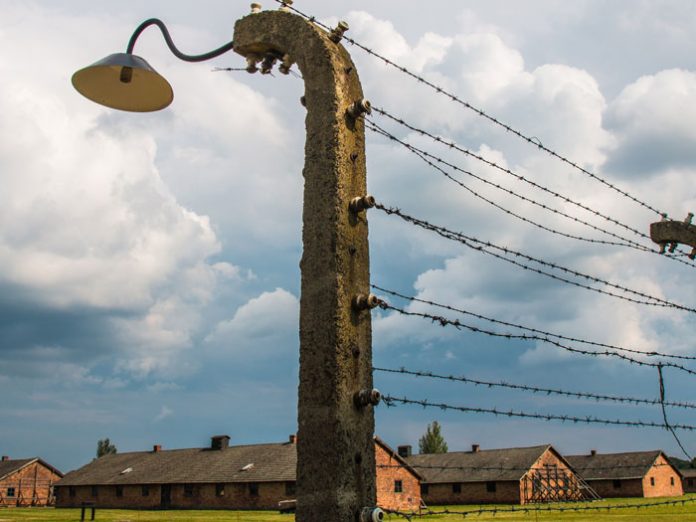I
am making my way to the Vizhnitz beis hachaim to attend an unusual levayah—a funeral for the unidentified remains of Jews who were murdered in the Chelmno extermination camp in Poland.
I arrive at the cemetery, not knowing where to go, and follow the crowd up the hill. It has just begun to rain, a fitting backdrop for this sad, historic burial. Reaching the top, I join a large assembly of people gathered at the gravesite.
I am standing in a sea of men and women, young and old, Bais Yaakov girls and yeshivah boys. There are chasidim and Litvish Jews, Modern Orthodox and the unaffiliated. It is a true kiddush Hashem. Everyone has come together to honor the kedoshim whose ashes will be interred on this day, some 74 years after the end of World War II.
The levayah is solemn and emotional. Hespedim are given. Keil Malei Rachamim is intoned. I cannot help but think of the millions killed by the Nazis who did not merit to be buried, their ashes scattered in the wind across the continent of Europe. A full-sized aron is lowered into the ground. The men step forward to throw dirt on top, honored to be taking part in this once-in-a lifetime event.
The crowd quietly disperses. I glance back at the monument that has been erected over the plot, the haunting words of Megillas Eichah etched into the stone: “Al Eileh Ani Bochiyah—For These Do I Weep.”
I leave the cemetery with many unanswered questions: How were these ashes found? How did they make their way from the Polish crematoria to Monsey? Who discovered them? Who arranged this levayah?
Chelmno was the first of the Nazi extermination camps, located approximately 31 miles north of the Polish city of Lodz. It was the first stationary facility where poison gas was used to murder Jews.
Victims were led down a ramp into the back of a truck that could hold between 50 and 70 people. The mechanic on duty would attach a tube to the exhaust pipe, start the engine and pump carbon monoxide into the truck. The victims were then driven to an encampment in the forest where their bodies were transferred to previously excavated mass graves.
When the smell of decomposing bodies overwhelmed the surrounding areas, the SS ordered the bodies to be burned in open-air ovens, leaving only the victims’ ashes to bear witness to their atrocities.
I then discovered that my friend and colleague, Mrs. Julie Golding, was the one who discovered the ashes and who subsequently became the driving force behind the effort to bury them.
***
I first met Julie when we both participated in Torah Umesorah’s Zechor Yemos Olam Fellowship in 2012. My fellow participants and I had spent that year studying the Holocaust from a frum perspective. Upon completing our studies, we traveled together to Poland to witness firsthand the places we had read about. It was my first time seeing the death camps in Poland and Julie’s second.
I knew that Julie was an expert in Holocaust studies and had taught the history of the Holocaust in a number of schools in Monsey, and I wondered how she had come to play such a critical role in the levayah I had just attended.
After I reached out to her, it took a while until we were finally able to carve out some time from our busy schedules to have a conversation. My first question for her was about the details of her background.
After graduating from high school in Monsey, Julie had attended Bnos Chaya Seminary in Israel. From there she went on to Lander College for Women, where she earned a bachelor’s degree in history and a master’s in modern Jewish history. Ever the student, she then earned a degree in educational leadership and administration from George Washington University in Washington, DC, and she is currently enrolled in a PhD program in Jewish educational leadership and innovation at the Azrieli Graduate School, an affiliate of Yeshiva University. After getting married, Julie lived in Israel for five years, during which time her husband learned in the Mirrer Yeshivah kollel.





















